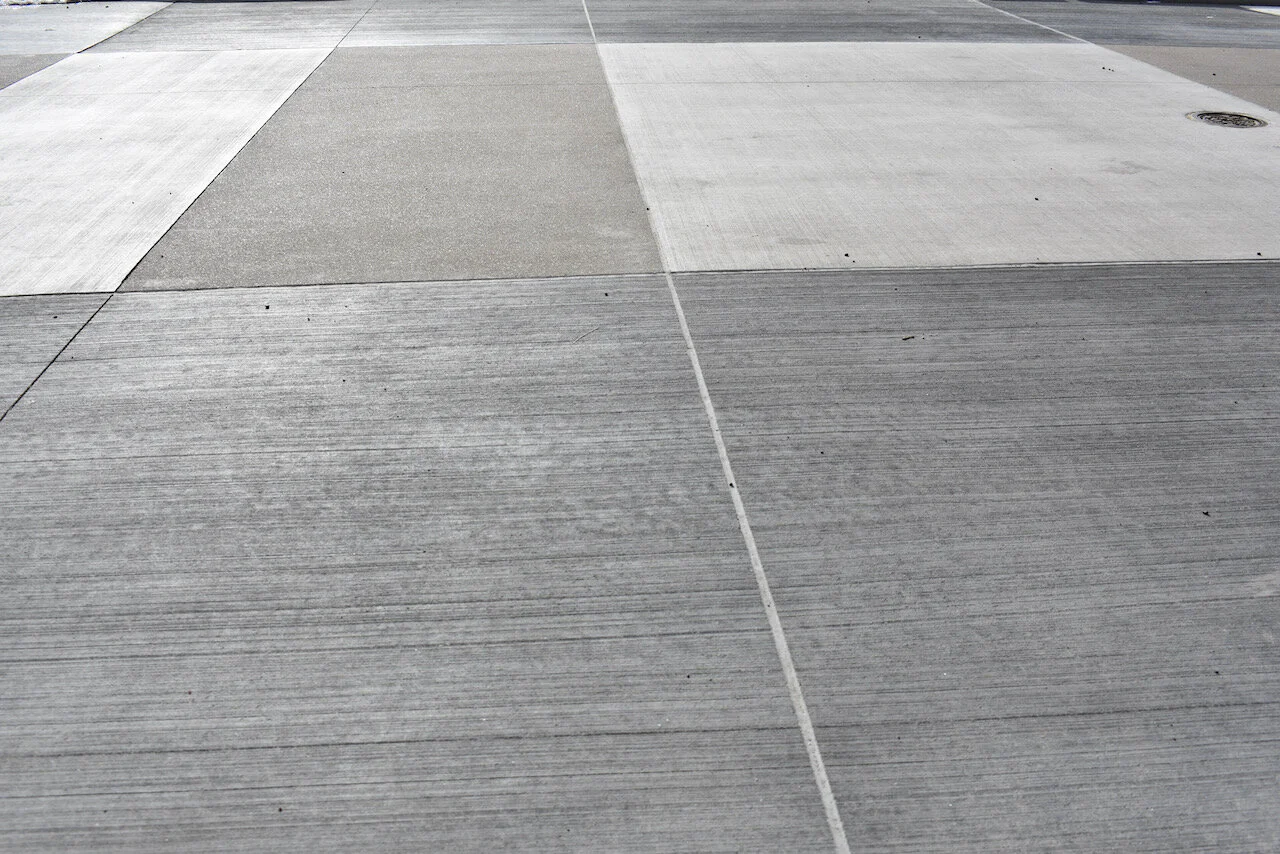I live and breathe decorative concrete, and have my entire life. So it used to baffle me when people would look at me confused when I talked about “decorative concrete”. However, as I discovered, decorative concrete is not common knowledge. When people talk about concrete, the majority of them probably don’t think of anything beyond a standard building material. So, what exactly is decorative concrete? Decorative concrete takes traditional gray concrete and enhances it by use of color, texture, or both. This can be achieved in a multitude of ways, but here are some of the basics:
Decorative Concrete Flatwork:
Integrally Colored Concrete - achieved by adding integral color to the concrete during the mixing process. These colors are usually neutral in tone - think grays, browns, and reds.
Color Hardener Colored Concrete - achieved by broadcasting a powdered color to the concrete during the finishing process, while the concrete is still “wet”, and the color because an integral part of the concrete’s surface. There are quite a few more color options, but the color is not full-depth
Stained Colored Concrete - adding a topical stain to the surface of cured concrete. Also quite a few options, depending on the type of stain chosen, but should be sealed and maintained since it is only on the surface.
Broom finish concrete - traditional sidewalks and such are broom finish. This is achieved by dragging a broom across the surface during the finishing process. There can be light, medium, or heavy broom textures. It can be creative as well by changing the direction of the broom. This can be done to colored or uncolored concrete.
Sweat/Swirl finish - Achieved by a sweeping movement of the finishing tools. This can be done to colored or uncolored concrete.
Exposed Aggregate Concrete - exposed aggregate uses a process to remove the top layer of the concrete concrete to expose the aggregate in the concrete mix. This can be a sand finish concrete or a small rock exposed aggregate. This can be done to colored or uncolored concrete.
Seeded Exposed Aggregate - similar to exposed aggregate, but instead of just revealing the aggregates and sands in the concrete, additional decorative glass, sea shells, or rocks are “seeded” into the surface prior to exposing the aggregate. This can be done to colored or uncolored concrete.
Stamped Concrete - Concrete is imprinted with texture or patterned tools to create the look of stone or wood patterns. This is usually done with color hardener and a colored release agent, but can also be done to integrally colored concrete.
Overlays - sometimes concrete is overlaid with a decorative concrete material to give the concrete a new life. These overlays can be as thin as a credit card, depending on the final texture.
Decorative Concrete Sawcuts - simply adding decorative sawcuts can make both decorative and standard concrete more decorative.
Decorative Concrete Floors:
Stained Concrete - just like the exterior, interior concrete can be stained and sealed
Polished Concrete - Concrete is ground, honed, and polished to provide a low maintenance durable concrete floor
Overlays - a skim coat micro-topping can be applied to existing floors to give it new life.
Ground or Burnished Floors - floors can be ground oped or lightly burnished and sealed to give it an industrial decorative finish.
Decorative Concrete Sawcuts - simply adding decorative sawcuts can make both decorative and standard concrete more decorative.
Decorative Concrete Walls:
Exposed Aggregate - decorative concrete walls can be sand finish or exposed aggregate just light flatwork
Formliners - similar to “stamped concrete”, a texture or pattern can be applied to the concrete forms for a wall to leave a decorative finish on concrete walls
Shotcrete - concrete can be sprayed and carved to look like stone or rock.
Board Form Concrete Walls - board form walls can be achieved by using actual boards to form the wall, or by using a formliner.
Smooth Finish - Decorative concrete walls can be rubbed smooth to achieve a high end decorative finish
Colored Concrete Walls - all of the finishes above can be done with integrally colored concrete as well.





















